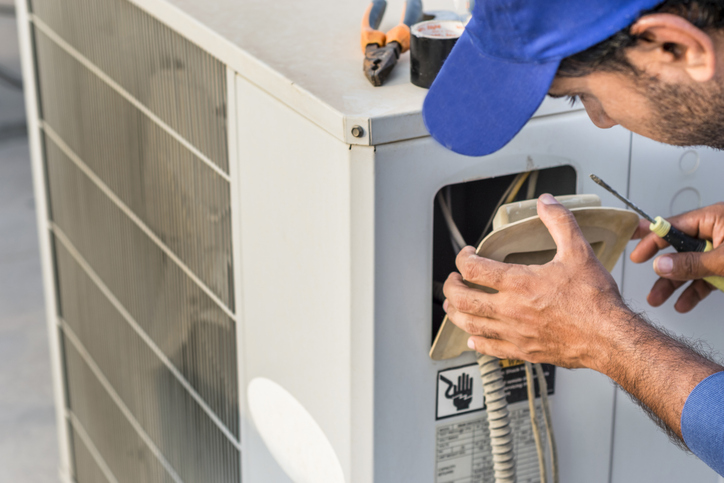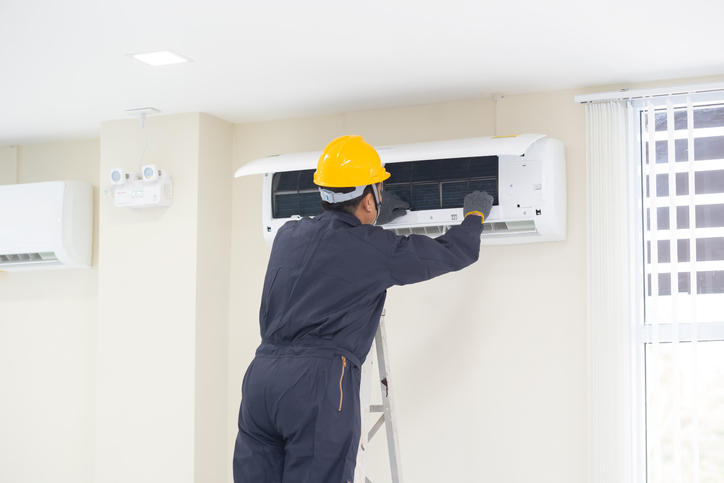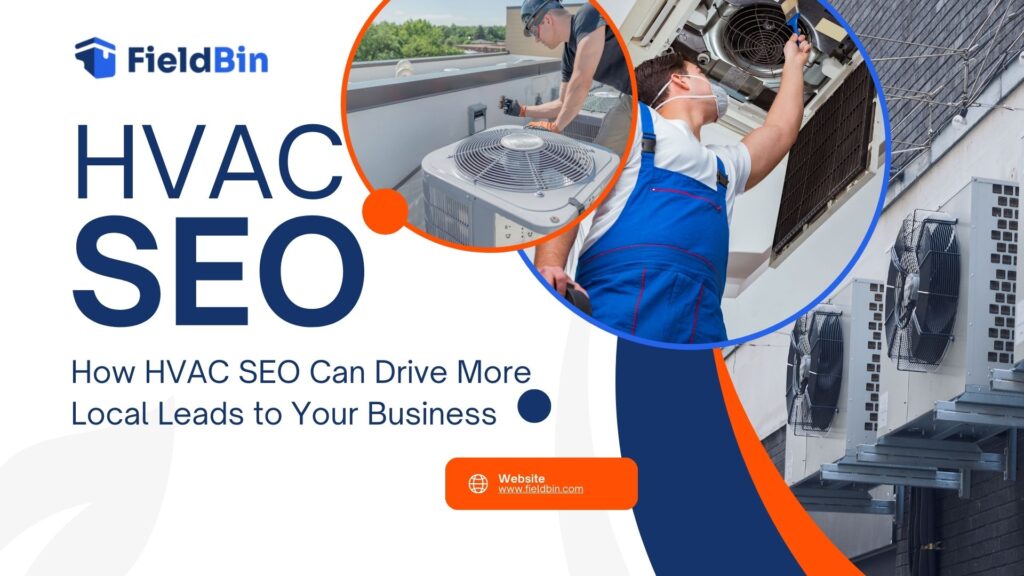As an HVAC business owner or marketing manager, you’ve probably had times when you deliver great service, but the phone doesn’t ring as much as you’d like. It’s frustrating because you know you can help more people, but they aren’t finding you. I’ve talked with many HVAC professionals who’ve faced this same issue. The problem isn’t the quality of your work—it’s that people don’t know you’re there when they need you. That’s where HVAC SEO comes in.
I once worked with an HVAC company that had positive customer reviews but was struggling to bring in new leads. They were excellent at what they did, but their online presence wasn’t reflecting that. By focusing on HVAC SEO, we helped them climb up the local search results, and the difference was clear. Calls started coming in, and their business began to grow.
In this post, I’ll break down what HVAC SEO is, why it’s important for your business, and how you can use it to attract more local customers. Whether you’re new to SEO or looking to fine-tune what you’re already doing, I’ll share practical tips to help you get noticed online, just like it did for that HVAC company.

Understanding the Basics of HVAC SEO
HVAC SEO helps your HVAC company’s website show up when people in your area search for services like yours. Instead of trying to reach everyone, HVAC SEO focuses on customers in your local area—the ones who are most likely to call when they need help.
When someone nearby searches for “HVAC repair near me” or “AC installation in [Your City],” good HVAC SEO makes sure that your business appears in those search results. This increases the chances that you’ll connect with local leads who are ready to hire you.
Why Local SEO Matters for Your HVAC Business
Local SEO is important for any HVAC business, including yours. Most people start their search for HVAC services online, usually looking for providers nearby. By optimizing for local search, you make sure your business shows up when potential customers are looking. This helps people find you and shows that your company is a convenient choice.
For example, if you’re based in Austin, Texas, appearing in searches like “HVAC services in Austin” or “Austin emergency AC repair” can lead to more calls and bookings. This local focus is what makes HVAC SEO so effective at turning leads into customers.
If you want to dive deeper into why local SEO is important for small businesses, Moz has a great guide. HubSpot also offers a useful overview of SEO strategies that can boost your online visibility. And if you’re interested in learning more about how Google My Business can enhance your local SEO, Google’s resources provide plenty of helpful insights.

Key Components of HVAC SEO for Local Lead Generation
To bring in more local leads, I focus on key aspects of HVAC SEO. These strategies help improve my search engine rankings and make it easier for customers in my area to find my business.
Optimizing My Google My Business Profile
One of the first steps in HVAC SEO is setting up my Google My Business (GMB) profile. This free tool lets me control how my business appears in Google Search and Maps, which helps local customers find me more easily.
How I Optimize My GMB:
- Claim My Profile: If I haven’t done this yet, I search for my business on Google and follow the steps to verify my listing.
- Complete My Information: I make sure my profile includes my business name, address, phone number, website, and the areas I serve.
- Use Local Keywords: I include local HVAC keywords in my business description and service categories.
- Add Photos: I upload pictures of my business, team, and services to make my profile more appealing.
- Collect and Respond to Reviews: I encourage customers to leave reviews and make sure to respond to them to build trust.
An optimized GMB profile not only helps me show up in local searches but also builds credibility with potential customers.
On-Page SEO for My HVAC Website
On-page SEO involves improving the elements on my website to boost its search engine rankings. This covers everything from the content I write to how my site is set up.
Key Areas I Focus On:
- Titles and Meta Descriptions: I use clear, keyword-rich titles and meta descriptions for each page on my site. For example, a title like “Professional HVAC Services in [City]” targets local customers.
- Headers and Subheaders: I organize my content with headers and subheaders that include HVAC SEO keywords. This helps make my content easier to read and search engines understand my pages better.
- Local Keywords: I weave local keywords throughout my content. Instead of just saying “HVAC repair,” I use phrases like “HVAC repair in [City].”
- User Experience: I make sure my website is easy to navigate, loads quickly, and works well on mobile devices. Search engines prioritize sites that offer a good user experience, which can improve my rankings.
For more detailed guidance on on-page SEO, check out this comprehensive guide from Moz.
Creating Locally-Optimized Content
Content plays a big role in SEO, and HVAC SEO is no different. Creating content that speaks directly to my local audience helps bring more visitors to my site and builds trust within my community.
Some Content Ideas:
- Blog Posts: I write about local weather conditions and how they impact HVAC systems, such as “How to Prepare Your AC for the Hot Summers in [City].”
- Service Pages: I create pages for each of my services, like “Furnace Repair in [City]” or “Emergency HVAC Services in [City].”
- Customer Case Studies: I share stories of local projects, highlighting the work I did and the customer’s satisfaction.
For tips on creating content that drives traffic, check out HubSpot’s guide on content creation.
Building Local Citations and Backlinks
Local citations and backlinks are important for boosting my HVAC business’s local SEO. Citations are mentions of my business’s name, address, and phone number on other websites, while backlinks are links from other sites to mine.
How I Build Citations and Backlinks:
- Local Directories: I list my business on local directories like Yelp, Angi, and the Better Business Bureau. I make sure my information is consistent across all platforms.
- Industry-Specific Sites: I get my business listed on HVAC-specific directories and websites to build credibility within my field.
- Partnerships and Sponsorships: I work with local businesses or sponsor events to earn backlinks from their websites.
For more on building citations and backlinks, refer to this resource from Search Engine Journal.
Leveraging Customer Reviews for SEO
Customer reviews are a key part of HVAC SEO. Positive reviews not only attract new customers but also improve my search engine rankings.
What I Do with Reviews:
- Ask for Reviews: After completing a job, I ask my customers to leave a review on my Google My Business profile or other review sites.
- Respond to Reviews: Whether they are positive or negative, I respond to reviews to show that I value customer feedback and care about improving my online reputation.
- Highlight Reviews: I feature positive reviews on my website and social media to build trust with potential customers.
To learn more about managing online reviews, check out this guide from BrightLocal.
By managing and using customer reviews effectively, I create a positive online presence that attracts more local leads and strengthens my HVAC business’s reputation.

Advanced HVAC SEO Tactics for Driving Local Leads
After I understand the basics of HVAC SEO, I can use more advanced techniques to attract additional local customers.
Adding Structured Data to My Website
Structured data, or schema markup, helps search engines understand the content on my website. For my HVAC business, this could include details such as the services I offer, my business hours, and customer reviews.
How to Add Structured Data:
- Use a Plugin: If my website is on WordPress, I can use plugins like Schema Pro to add structured data easily.
- Add Code Manually: If I am familiar with coding, I can add schema markup directly to my site’s HTML. Google’s Structured Data Markup Helper can guide me through this process.
Adding structured data can increase the chances of my website appearing in enhanced search results, which might lead to more clicks.
Using Local PPC Ads to Support SEO
While SEO is effective for long-term results, Pay-Per-Click (PPC) ads can drive visitors to my website quickly.
Tips for PPC Ads:
- Focus on Local Keywords: I use keywords specific to my local area in PPC ads to attract customers searching for HVAC services nearby.
- Write Clear Ad Copy: I make sure that my ad copy highlights what makes my business unique, such as “HVAC Repair in [City].”
- Monitor Performance: I regularly check how my PPC ads are performing and adjust them to improve results.
By combining PPC ads with SEO, I can attract both immediate and long-term leads, supporting steady growth for my business.

Measuring the Success of Your HVAC SEO Efforts
To assure that your HVAC SEO strategies are working effectively, it’s important to track and measure key metrics.
Tracking Key Metrics
The following metrics will help you assess the performance of your SEO efforts:
- Organic Traffic: Monitor the amount of traffic coming to your site from search engines. Tools like Google Analytics can provide detailed insights.
- Local Search Rankings: Use tools like Google Search Console to track how your website ranks for local HVAC keywords.
- Lead Conversion Rates: Measure how many visitors to your site convert into actual leads or customers.
Tracking these metrics regularly allows you to understand what’s working and where there’s room for improvement.
Adjusting Strategies Based on Data
SEO is not a set-it-and-forget-it strategy. Use the data you collect to refine and improve your HVAC SEO tactics. If certain keywords aren’t driving traffic, consider adjusting your content strategy. If your lead conversion rates are low, revisit your website’s user experience and calls-to-action.
Ongoing optimization guarantees that your HVAC business continues to attract high-quality local leads and stays ahead of the competition.
Conclusion
By now, I hope I have shown you how HVAC SEO can help bring in more local customers. Improving your Google My Business profile, creating local content, and listing your business in local directories are key steps to boosting your online presence and attracting customers nearby.
When I first focused on HVAC SEO for my business, I noticed a real difference in how easily new customers could find us. For instance, after updating our Google My Business profile and regularly posting local content, we saw more inquiries and bookings. This highlighted how effective these strategies can be.
Remember, HVAC SEO is an ongoing effort. It requires regular updates and adjustments. The benefits—more leads, better search rankings, and a stronger local presence—make the work worthwhile. I recommend starting these strategies now and observing how your HVAC business can grow. It has been rewarding to see our business gain more visibility and attract local customers.
If you are ready to enhance your HVAC business’s online presence but need some help, consider working with an HVAC SEO specialist. I have seen how collaborating with the right team can make a big difference. Reach out to us today to learn how we can assist you in reaching your marketing goals and attracting more local customers.

